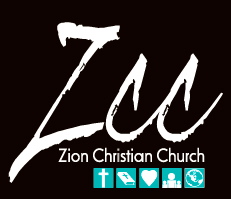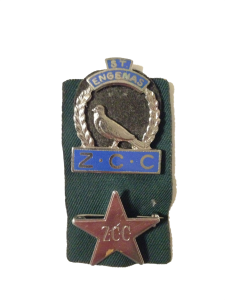Zion Christian Church

History of Mt. Zion Church of Christ
 The Zion Christian Church (or ZCC) is one of the largest African initiated churches in southern Africa, with members belonging to ZCC star and members belonging to the Saint Engenas ZCC. The church’s headquarters are at Zion City Moria in Limpopo Province, South Africa, and the two congregations that compose the church are led by Barnabas Lekganyane and Saint Engenas Lekganyane, the grandsons of its founder.
The Zion Christian Church (or ZCC) is one of the largest African initiated churches in southern Africa, with members belonging to ZCC star and members belonging to the Saint Engenas ZCC. The church’s headquarters are at Zion City Moria in Limpopo Province, South Africa, and the two congregations that compose the church are led by Barnabas Lekganyane and Saint Engenas Lekganyane, the grandsons of its founder.
History
The ZCC was formed in 1924 by Engenas Lekganyane. After receiving a short education at an Anglican mission, Lekganyane was converted to Zionism around 1913 in Boksburg. He joined the Zion Apostolic Church and eventually became a preacher of a congregation in his hometown during late WWI. After falling out with the ZAC leadership, Lekganyane went to Basutoland to join Edward Lion’s Zion Apostolic Faith Mission in 1920. After some time he returned to the Transvaal as the regional leader for Lion.
Lekganyane ZCC members trace the founding of the church to a revelation which Lekganyane is said to have received from God on the top of Mt Thabakgone around 1923 or 1924.[4] The church was initially based in Lekganyane’s home village of Thabakgone, near Polokwane in South Africa’s Limpopo Province. After clashes with his chief, Lekganyane was determined to obtain land, and between 1938-42 he eventually obtained title to Maclean Farm near Thabakgone. The ZCC was officially registered as a church in 1942, by which time congregations had additionally been established in Botswana and Zimbabwe. The early church was strongly influenced by the doctrines of the Christian Catholic Church of John Alexander Dowie, based in Zion, Illinois in the United States of America, and by the teachings of the Pentecostal missionary John G. Lake, who began work in Johannesburg in 1908.
The ZCC changed fairly dramatically following his son Edward Lekganyane’s assumption of control of the church in 1948. Edward was a highly-educated, flamboyant figure who eventually obtained a degree at an Afrikaans divinity school. In contrast to his father, Edward relied less on faith healing and oral testimony in services, and moved towards a more biblically-based doctrine. Under his leadership the all-male Mokhukhu organization developed. This group, which initially formed to protect Edward during hostilities that pitted him in a war of succession against his brother Joseph, eventually came to include all male members of the Church. Wearing khakis, police hats, and the Star badge, the Mokhukhu in each congregation engaged in ritualized dancing, singing, and praying three times a week according to a preset schedule. An additional feature of Edward’s control of the ZCC was the rapid growth of Zion City Moria as a pilgrimage site. Using the Boyne Farm that his father had purchased in the 1940’s, Edward instituted annual pilgrimages that have gone on to become massive southern African-wide events. Each year during Easter Holidays Church members bus en masse to Moria, Polokwane (between 4 an 5 million members) to meet the Bishop and to pray for blessings.
Characteristics
 Zion Cristian Church St. Engenas and Star medals on Green background.
Zion Cristian Church St. Engenas and Star medals on Green background.
- The belief that the religious and administrative leader of the church (or bishop) is a mediator between the congregation and God through Jesus Christ; that, like Christ, he can perform supernatural acts and faith-healing in the name of Lord Jesus Christ.
- The belief that senior officials in the ZCC (known as baruti) can use the power of the Holy Spirit to perform healing.
- The use of different mechanisms for faith-healing. These include the laying-on of hands, the use of holy water, drinking of blessed tea and coffee, and the wearing of blessed cords or cloth.
- The colours of the church are green, yellow/gold, khakhi, white, blue, maroon, and brown.
- Green and yellow suits are for men and women and are called ‘seaparo se segolo.’ Khaki suits are for Mokhukhu (with a star badge) or are worn by men in Saint Engenas (with a dove badge). Blue suits are for women and are called ‘khwaere ya bomme’; they used to be worn on Sundays. There are also khaki suits with green jerseys for ‘khwaere ya bomme,’ worn on Saturdays. Brown suits are for men and women who are singing ‘Nkedi.’ Maroon and white is for Zion City members who helped with church activities.
- Because the church preaches the message of peace, they start their greetings with the word ‘KGOTSONG OR KGOTSO A E BE LE LENA (KGOTSO E BE LE LENA)’meaning “peace be unto you.” ZCC is about peace and respect and the love of God.
- The church has its own magazine called “Messenger”. Next to messages for its members, the magazine contains a list of events in the congregations throughout the country (e.g. visits of the Bishop).
- There are other ZCC sacred locations Pudingwana or Podingwane (Podungwane) near Lebowakgomo. This is the original headquarters of ZCC before it moved to Moria. And Thabakgone which is the church founder’s birthplace in Ga-Mmamabolo.
- Women do not take part in Sunday service preaching. They, especially in Z.C.C Star, are allowed to preach during the women services held every Wednesday.
- Lekganyane is believed to have supernatural powers(believed to be the mediator between man and God).This is th reason why most worship songs are about him.
- Lekganyane is referred to as “Kgomo,’ which is translated Cow.

